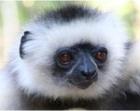What an amazing experience!
Madagascar is a country like no other
The rich diversity of the terrain and wildlife
means there is something new to see at every
place we visited but sadly, the poverty of
the people is heart-rendering – many
people in the UK receive more in annual unemployment
or disability benefits than the average Malagasy
person will earn from hard work in a lifetime.
Millions of years of isolation have led to
the evolution of a whole range of life-forms
that are found nowhere else on earth. Had
Charles Darwin sailed to Madagascar instead
of the Galapagos, he would, surely, have
discovered evolution far earlier. The island’s
most famous inhabitants are its lemurs -
charming off-shoots of the primate
family tree, that have lifestyles as diverse
as the forests they live in. There are no
monkeys or apes and most lemurs have no predators
-except where there are fossa in some parks
and large buzzards and eagles that target
the very young. Ring-tailed Lemurs live in
large troops like baboons, Sportive Lemurs
are solitary, the Aye-aye feeds like a woodpecker,
while the Indri resembles a giant teddy bear
that sings in the rainforest canopy. The
current scientific register lists nearly
100 species of lemur.
Madagascar was the home of the Elephant Bird,
the largest bird that ever lived, until just
a few centuries ago. Catastrophic habitat
loss has led to the extinction of this and
many other endemic species, but there are
still well over a hundred endemic birds.
Like Darwin’s Finches in the Galapagos,
there are families of birds – the Vangas
– that display a huge variety of beak
shapes to exploit different sources of food,
the Couas that peck through leaf-litter like
pheasants and the elusive Ground Rollers
that nest in burrows and haunt the darkest
recesses of the forest.
Reptiles too, abound – over 60% of
the world’s chameleons species live
on the island and nowhere else, including
the huge Parson's Chameleon, the world’s
largest at up to 60cm. Other reptiles include
the amazing Leaf-tailed Gecko whose camouflage
is near perfect, and the beautiful mottled
green and black Tree Boa. Add to this a myriad
of colourful tree frogs and a multitude of
peculiar insects and there is always something
to grab your attention.
Madagascar is a country rich in habitat diversity.
There can be few places where it is possible
to experience lush rainforests, rugged mountain
plateau, dry forests and semi-desert spiny
forests with a single tour. It is an intoxicating
country that you can’t fail to fall
in love with. The strange and incongruous
mixture of Indonesian, Polynesian and African
influences combine to produce a country unlike
any other. Memories of the friendly people
and unique wildlife will linger and create
the overriding experience of an island lost
in time.





